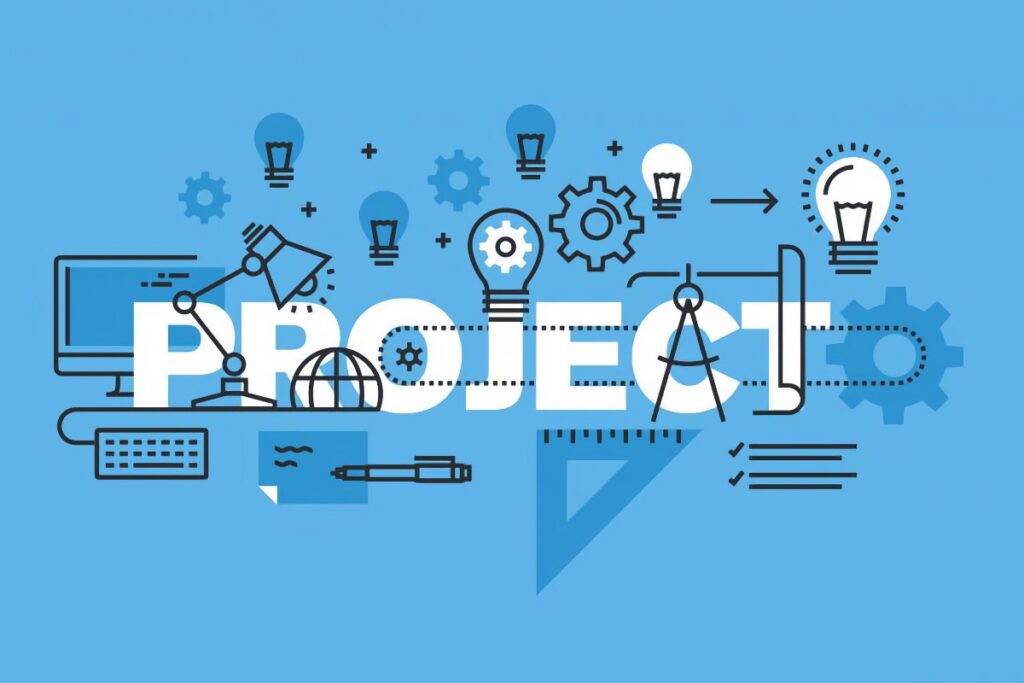Every project, program, or product passes through a set of development stages known as life cycle phases, or the project life cycle. A clear understanding of these phases helps project managers and stakeholders plan, allocate resources, and make informed decisions at each step of execution.
The project life cycle refers to the period between the formal start and closure of a project. Regardless of its scope or complexity, every project follows this lifecycle — though the specific start and end points may differ depending on how the organization defines them.
When Does a Project Begin and End?
A project may begin with:
- The emergence of a business need or opportunity
- The generation of an idea or concept
- The formal approval to initiate work or allocate funding
A project is typically considered complete when:
- Its intended deliverables have been handed over to operations or the client
- The project’s goals or success criteria are met
- The budget is fully spent, or funding is withdrawn
- The team is reassigned or disbanded
- A final project review and administrative closure are completed
These milestones are usually formalized with documentation such as a project charter, closure report, or contract sign-off.
The Four Phases of the Project Life Cycle
While industries may define project phases differently, most models can be generalized into four core phases: Initiation, Planning and Execution, Closure, and Warranty or Support. Each phase represents a shift in focus, resource use, and stakeholder engagement.
1. Initial Phase (Initiation and Concept Development)
This phase defines why the project exists and what it aims to achieve. It includes:
- Problem or opportunity identification
- Preliminary research and feasibility analysis
- Evaluation of alternatives
- Development of the business case or project concept
- Stakeholder identification and early risk analysis
In tender-driven projects, this is when organizations decide whether to submit a bid. If they move forward, they prepare proposals and initial cost estimates.
Key characteristics:
- Low investment and resource intensity
- High uncertainty and strategic impact
- Involves senior decision-makers and sponsors
2. Main Phase (Planning and Execution)
This is the most active phase of the project. It includes:
- Detailed project planning (schedule, cost, scope, communication, procurement, etc.)
- Team formation and resource allocation
- Execution of tasks according to the plan
- Monitoring and controlling performance
- Managing risks, quality, and stakeholder expectations
This phase sees the highest concentration of effort, spending, and coordination. Execution can be iterative (Agile) or sequential (Waterfall), depending on the chosen project methodology.
Key characteristics:
- Maximum investment intensity
- Cross-functional collaboration
- Requires adaptive change management and continuous feedback
3. Final Phase (Delivery and Closure)
In this phase, the project is finalized:
- Deliverables are completed, verified, and handed over
- Documentation is wrapped up
- Final evaluations are conducted
- Contracts are closed and teams disbanded or reassigned
- Lessons learned are collected and archived
A formal project review or audit may be conducted to determine success, identify areas for improvement, and celebrate achievements.
Key characteristics:
- Lower costs and intensity compared to execution
- Focus shifts to validation, quality, and administrative work
- Transition planning is critical
4. Warranty or Support Phase (Post-Implementation)
Often overlooked, this phase ensures that the project’s results are usable, stable, and meet user expectations:
- Ongoing support or operations begin
- Warranty obligations are fulfilled
- Issues discovered during early usage are corrected
- Final performance metrics are reviewed
This phase may overlap with the early stages of product or system maintenance and is especially important for engineering, software, and capital-intensive projects.
Key characteristics:
- Defects and bugs are addressed
- Feedback is gathered for future projects
- May be governed by service-level agreements (SLAs)
Investment Intensity and Resource Planning
Each project phase has a different level of investment intensity. Early phases typically require limited resources but high-level decision-making. The execution phase consumes the majority of budget and labor. Later stages require specialized support and evaluation resources.
Understanding this investment curve helps managers:
- Optimize resource allocation
- Balance capacity across parallel projects
- Avoid overallocation and burnout
In smaller organizations or agile environments, one person may manage multiple projects in different lifecycle stages simultaneously.
Phase Transitions and Decision Gates
Transitioning between phases often involves decision gates (also called stage gates or phase reviews), where leadership reviews:
- Achievements
- Costs to date
- Risks and forecasts
- Go/no-go recommendations
This structured evaluation ensures early detection of issues and avoids wasteful continuation of unviable projects.
Adapting the Lifecycle to the Organization
There is no one-size-fits-all model. Lifecycle structures vary depending on:
- Industry (e.g., construction vs. software development)
- Methodology (Agile, Waterfall, Hybrid)
- Company culture and maturity
However, even in agile teams where iteration replaces rigid phase gates, the project still follows a lifecycle — from discovery and planning to delivery and refinement.
Conclusion
The project life cycle provides a universal structure to manage complex, time-bound initiatives. Understanding its phases and tailoring them to the project type and organizational context allows managers to:
- Improve visibility and control
- Enhance stakeholder communication
- Optimize resource usage
- Increase the likelihood of success
By aligning decision-making with each phase and conducting regular reviews, organizations can deliver better outcomes, learn from experience, and grow their project capabilities.




